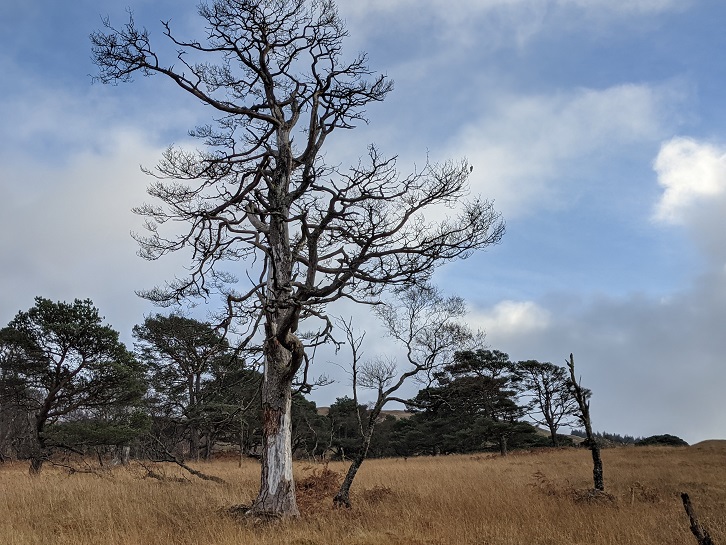
In November I spent an hour or so on the eastern side of Coille Coire Chuilc, north west of Crianlarich (for maps showing location see below). The wood (“coille”) is the second most southerly fragment of the Caledonian Pine Forest in Scotland and protected as such, being a Site of Special Scientific Interest and being listed in Scottish Forestry’s Caledonian pinewood inventory.
The wood is also located just off the West Highland Way and is crossed by a popular walking route up the Munro, Beinn Dubhcraig. It should be an amazing place for wildlife and people but instead is slowly dying. This post considers why.
The impact of overgrazing on the ability of the wood to regenerate naturally
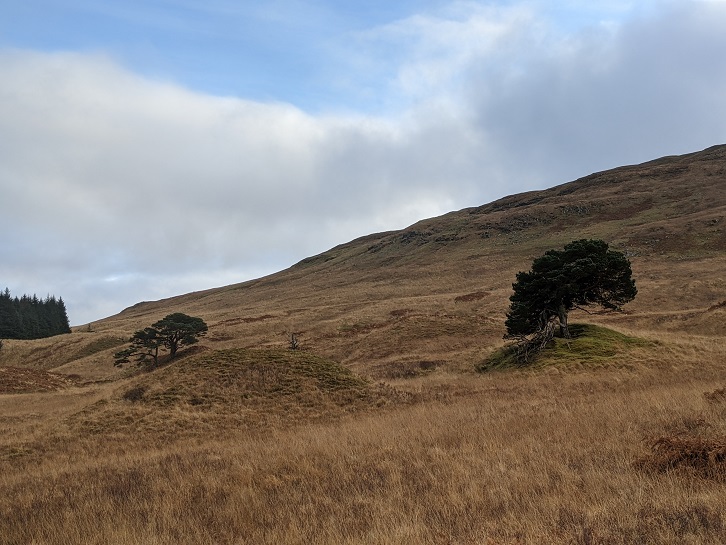
As anyone who has visited Glen Feshie or the Mar Lodge regeneration zone recently knows, bring down the number of grazing animals to the equivalent of a couple of deer per square kilometre and native woodland will regenerate. Isolated trees like that in the photo are an indication that grazing levels are far too high, a problem for the climate and nature emergencies.
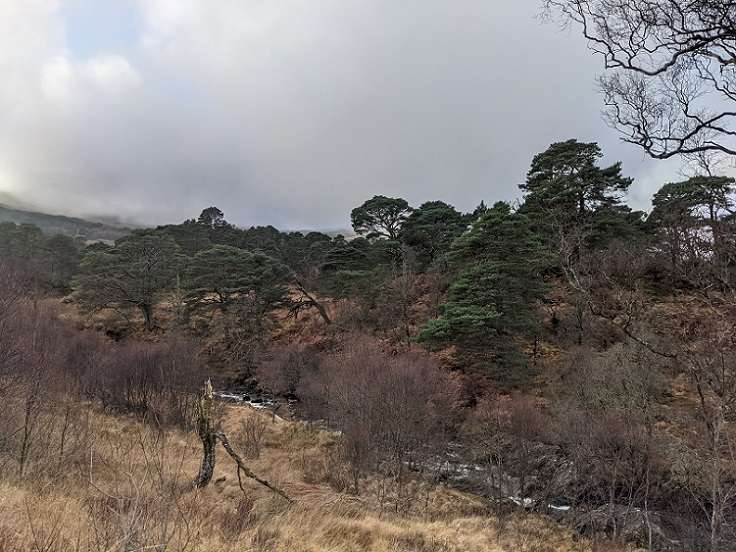
At Coille Coire Chuilc there have been attempts to reducing grazing levels since it was first designated a SSSI fifty years ago. There is a long history here of failed fencing. But, judging by the deciduous trees that are visible on the east bank of the Allt Gleann Auchreoch, for a short period grazing pressure did reduce. This allowed the trees in the photo to “get away”, but was not long enough for the Scots Pine – the backbone of the Caledonian Forest – to do so successfully.
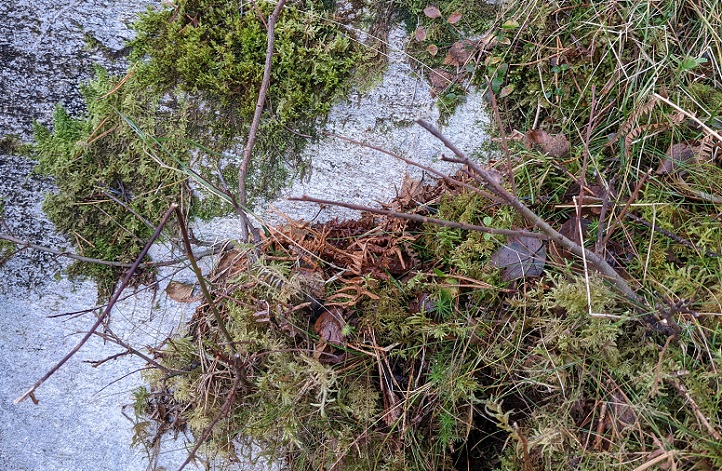
The trees haven’t stopped seeding since then but they don’t have a chance. Any tree or shrub that grows above the height of the surrounding vegetation, itself grazed low, gets eaten.
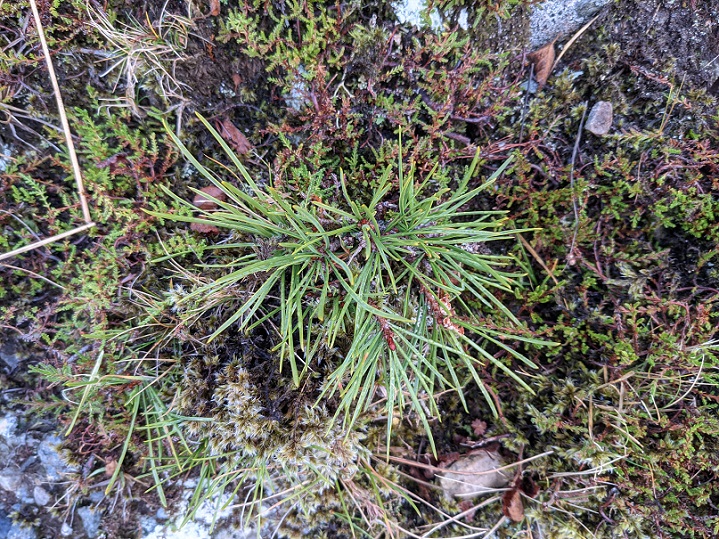
I did spot one pine sapling at the edge of the track, showing that the pine forest here would regenerate if given half a chance. The likelihood of it surviving the winter appear very low.
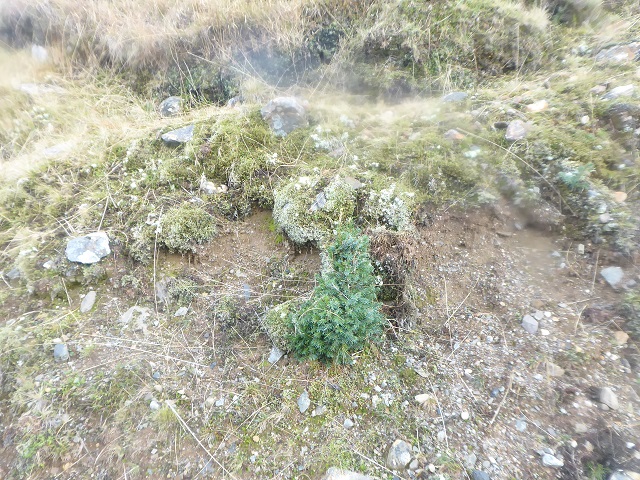
Even the far less palatable sitka, whose seedlings had spread several hundred metres from the Gleann Auchreoch forest plantation above, were being browsed to bits.
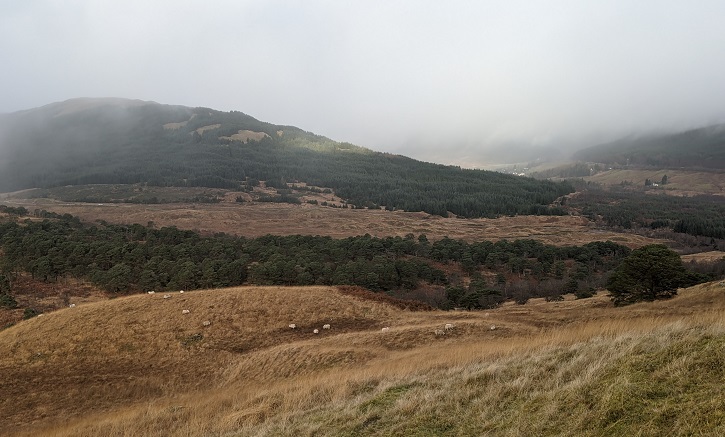
Unlike most of the Caledonian Pine forest in the Cairngorms, the primary grazing pressure at Coille Coire Chuilc – at least on the eastern side of the Allt Gleann Auchreoch – appears to be being caused by sheep, not deer.

Both species seek shelter from trees in bad weather so grazing pressure is at its most acute precisely in the areas that should be the first to regenerate. I
To save Coille Coire Chuilc the first thing that needs to happen is for the sheep grazing to stop.
Response from our Public Authorities to the overgrazing issue
To her credit, the Loch Lomond and Trossachs National Park Authority (LLTNPA)’s representative at the April meeting of the Inverary and Tyndrum Deer Management Group (see here), recognised that sheep are an even bigger problem than deer in the area: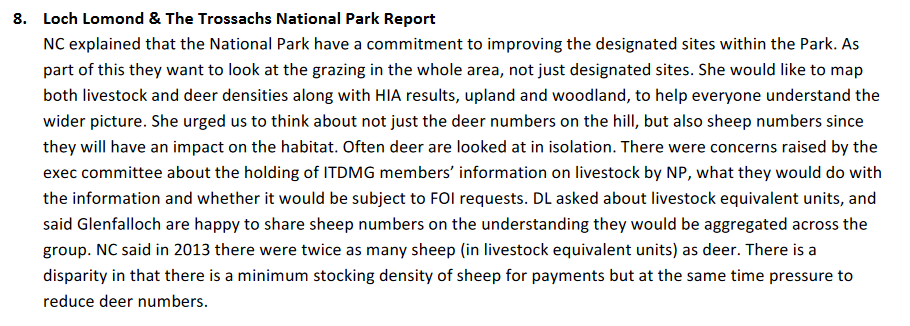
The problem is that she and the handful of committed conservation staff working for the LLTNPA are completely and utterly powerless. Landowners don’t even want to share information on the numbers of sheep they allow onto to the hill out of fear this could become public through Freedom of Information requests. This is despite sheep farming being funded by the public through the rural payments programme. The secrecy is not in the public interest.
Why are we subsidising any landowner to graze areas of supposedly protected Caledonian Pine forest? And why has the leadership of the LLTNPA never challenged this? Where are the complaints from the LLTNPA Board to Government Ministers?
In the same minute NatureScot are recorded as saying that “they are also looking at herbivore impacts in Coille Coire Chuilc SSSI woodland”. Fifty years after the Nature Conservancy first identified the importance of this fragment of the Caledonian Pine Forest, NatureScot are still considering the problem!
There is a nice illustration of the uselessness of NatureScot’s approach to protecting nature in the (updated) report they published in 2017 on invertebrate species and protected sites (see here). The section on Coille Coire Chuilc ends with these recommendations:

Monitoring without end, never any action and almost everything kept secret.
The last public Site Condition Monitoring report for Coille Coire Chuilc dates back to 2008 (see here). At the time the site was found to be in unfavourable condition, although five years earlier the beetle and fly assemblages were judged to be in favourable condition. It is not that surprising that saproxlylic beetles would do well in a dying pine wood but it sounds from the 2017 recommendations that the beetles may now also be dying out. Without new trees, the supply of dead wood for the beetles will run out.
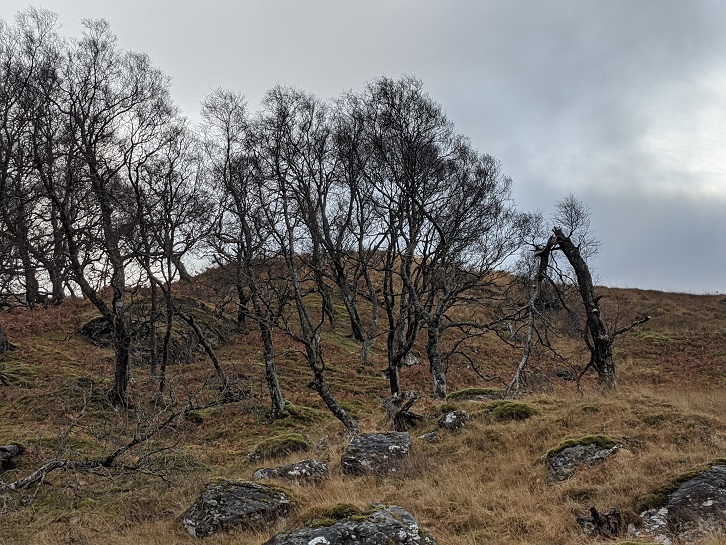
This failure to act is not the fault of the frontline staff concerned, it’s the responsibility of the leadership of NatureScot and the Scottish Government which appoints them. For an excellent analysis by Rob Edwards in the Ferret of how nature champions are being rejected for NatureScot’s Board see here.
This lack of leadership leads to the sort of defeatism that was recorded at the November meeting of the Deer Management Group (see here) where it was claimed that “until you get a good count, (there is) not much more you can do”. Since NatureScot has stopped paying for most deer counts and few landowners are prepared to do this, nothing happens.
NatureScot is now waiting for the Scottish Government to implement the recommendations of the Deer Working Group (see here). It should be obvious that those recommendations, which suggest reducing deer density to ten beasts per square kilometre and will do nothing to reduce sheep grazing, won’t save Coille Coire Chuilc either. In the face of the nature emergency, NatureScot is effectively paralysed from acting to protect places like Coille Choire Chuilc,

Scottish Forestry is the keeper of the native pinewood inventory (see here) ![]() and, as well as basic data
and, as well as basic data
which shows the core area, regeneration area, buffer area and total – 524 hectares is not much – has produced maps showing what should happen. This is another case of policy fantasy bearing no resemblance to what is happening on the ground.
As the distributor of forestry grants, Scottish Forestry should in theory be in a powerful position to change how the land is managed. But unfortunately at present it is more profitable for landowners to overgraze the land than protect it for carbon or nature.
Whether Scottish Forestry has done anything to try and influence the owners of Coille Choire Chuilc is unclear but its main focus has been on planting trees, particularly sitka, not natural regeneration.
Landownership and conservation failure
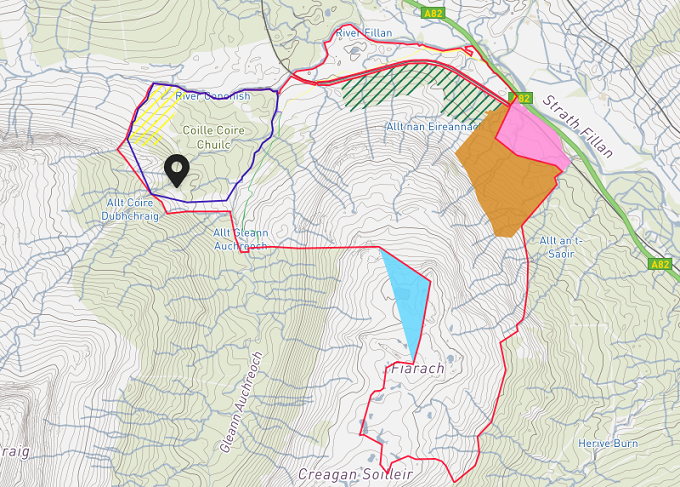
Coille Coire Chuilc forms part of a larger landholding that extends from the River Fillan to the summit of Fiarach. I did not think to check the Land Registry until after my visit. But when I did – the information is only available to those able and prepared to fork out the required fee – I Iearned that in 2014 the wood and much of the land about it had been sold by Major Martin Melvin Cruikshank of Auchreoch to Richard Bayman Lewis of Killin for £240,000.
That is a small sum of money, less than the LLTNPA has spent on installing a flushing toilet in the countryside. So why didn’t the LLTNPA, NatureScot or Forestry and Land Scotland simply buy the land then? They could have withdrawn the sheep, saved themselves a lot of bother and for the price of a stalker helped this bit of Caledonian Pine Forest to flourish again.
One wonders, however, if our public agencies even knew about the sale? That we allow land to be traded in our National Parks without any checks on the intentions of the prospective owners or whether the conditions (“burdens”) accompanying a sale are in the public interest should be a matter of serious public concern.
The Land Registry Title Sheet shows that as part of the 2014 sale Major Cruikshank retained the fishing and mineral rights but also inserted a burden to the effect that if Richard Lewis ever wanted to sell the land he, Major Cruikshank, would have the option to purchase the land at the same price:
“3 It shall not be in the power of the Disponee to sell the Disponed Property, or any part thereof,to any third party without first offering the same to the Granter at the same price and on the same material terms and conditions as the Disponee has agreed to sell, alienate or otherwise dispose of the same to a third party……………………”
The effect of this clause is that Major Cruikshank or his heirs could effectively pre-empt any offer by our public authorities to buy the land and manage it in the public interest. How this fits with the community right to buy is perhaps something that the Scottish Land Commission could explain.
The history of how Major Cruikshank’s ownership of the land has impacted on attempts to protect Coille Coire Chuilc go back a long way. The title sheet shows that in 1974 the Nature Conservancy concluded a 27 year agreement with the Major to fence a parcel of land within the blue boundary on the map above with the intention of enabling a small part of the wood to regenerate naturally. The fencing didn’t work and the agreement was not renewed in 2001.
A few weeks before his agreement with the Nature Conservancy, Major Cruikshank had sold the land in Gleann Auchreoch, now known as the Strathfillan forest, to EFG Estates Ltd:

That sale effectively prevented any expansion of the pinewood to the south:
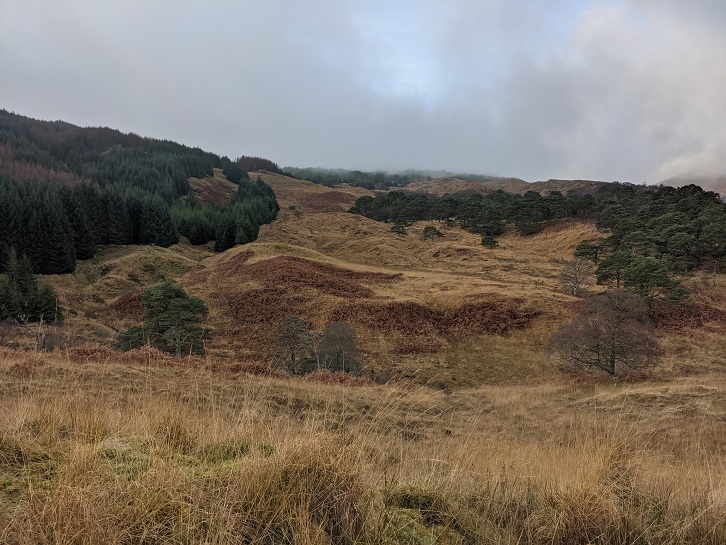
The sale had other implications for the regeneration of the pine wood. The title deeds for Coille Coire Chuilc show the owners of the Auchreoch plantation not only retain a right of access up the hill road but also have:
” the right at their expense to improve the said hill road to full forestry standards and to a width not exceeding twenty two feet between ditches”.

Widening this road to 22ft/7m would destroy a large swathe of pinewood habitat as well as some of the surviving trees.
By 2006, according to Andy Wightman’s website Who Owns Scotland (see here), the Gleann Auchreoch plantation was owned by Thar Enterprises Ltd, based in Jersey. I suspect a company based in tax haven were unlikely to be much concerned about the future of the Caledonian Pine Forest below but in October 2017 they sold the plantation for an undisclosed sum, having bought it for £221k in May 1999. Imagine the opportunity if the then Forestry Commission had bought this land in either 1999 or 2017. It could have paved the way to link the native pinewoods at Coire Chuilc and in Glen Falloch as I suggested the LLTNPA should do two years ago (see here).

To make matters worse, Scottish Ministers then sold Ewich Forest, on the eastern side of Gleann Auchreoch, on 16th March 2020 for an undisclosed sum. There had been no outcry about the sale of a large chunk of public land in the National Park (see here) – no doubt due to the lack of mainstream media coverage – and no opposition from the LLTNPA despite the West Highland Way traversing through the forest. Another potential opportunity to connect Coille Coire Chuilc with the Caledonian pine forest remnant in Glen Falloch lost.
And finally, another missed opportunity with another neighbouring landowner:
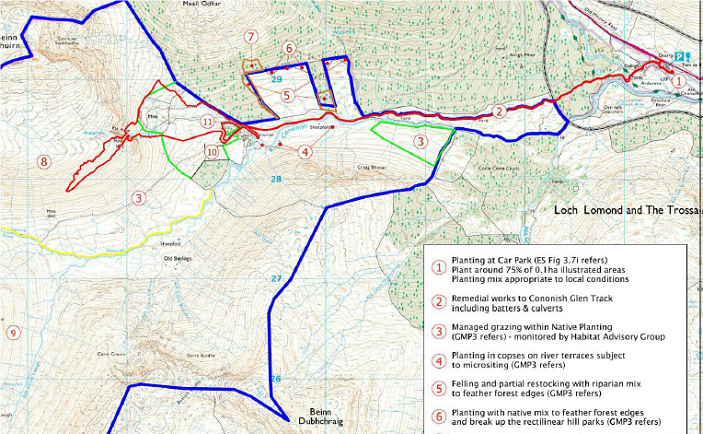
To mitigate the impact of the Cononish gold mine the developer, Scotgold Ltd, agreed to finance a a number of habitat “improvements” in Cononish Glen as well as restoring the site of the mine. One element of the improvements is a new enclosure (3 on map above) adjacent to the area within Coille Coire Chuilc that was originally fenced back in 1974. Rather, however, than let the area regenerate naturally (there is a commitment to this in the LLTNPA’s Trees and Woodland Policy) – which it would do if all grazing pressure was removed – it was agreed to plant the area and then allow managed grazing within the enclosure to meet the demands of Cononish Farm. If that works, I’ll eat my buff!
What needs to happen
There have now been almost 50 years of failed attempts by our public agencies to protect Coille Coire Chuilc. While all our public agencies acknowledge that this remnant of the Caledonian Pine Forest is important to conserve, none have got anywhere. The costs of their efforts in terms of staff time and public subsidy is not known but is likely to considerable.
Currently, there is a petition to the Scottish Parliament (see here) calling on the Scottish Government to pass new legislation to protect native woodland. The petition was prompted by people who were concerned about the impact that mountain bike trails were having on native woodland close to them. I haven’t been to the woodland in question but in my view the real threats to existing native woodland come primarily not from informal outdoor recreation but from development, overgrazing, invasive non-native species and forestry practices that get in the way of allowing native woodland to regenerate naturally (fencing, plastic tree shelters and general “gardening”). The Petitioners, however, do appear concerned about some of these issues and got some publicity about some of the problems with the Scottish Government’s continued promotion of industrial forestry on Sky News before Xmas (see here).
In response to the petition, the Scottish Parliament’s Information Centre has produced a helpful briefing on attempts to protect native woodland in Scotland (see here) which in my view illustrates just how little has been achieved. For example, Scotland’s Biodiversity Route to 2020, produced in 2013, was supposed to increase the area of native woodland in good condition, use Deer Management Plans to reduce grazing pressure and give a boost to conservation management on the national forest estate. None of that has been delivered at Coille Coire Chuilc and its the same for many other native woodlands across Scotland.
What is missing from all the polices and strategies that the Scottish Government has produced on land-use, from woodland to peatland to agricultural land, is any consideration of land-ownership, including what controls are needed to ensure that land is managed in the public interest or when land should be taken into public ownership.
The Scottish Government and its agencies will never be able to protect even special places like Coille Coire Chuilc until they grab that thistle. Having missed an opportunity to buy Coille Coire Chuilc in 2014, the only workable option now is compulsory purchase. That won’t happen without significant public pressure on the Scottish Government to buy up land, including Balmoral (see here), where voluntary measures haven’t worked.
The detailed intricacies of this are bewildering but come down to a core issue I have commented on before. Until such time as whatever government sits in Holyrood takes the issue of land ownership as a serious matter instead of the patronising, weasel words obscuring the many hidden attempts by ancestrally established land owners to maintain their grip on their property, then this and similar issues will remain a sore on our landscape. Section 5 of Peter Peacock’s lengthy paper – https://www.landcommission.gov.scot/downloads/5dd6c6f024659_Land-Lines-Land-Ownership-Peter-Peacock-March-2018.pdf – concludes; “In considering the question of ownership of scale and concentration in today’s policy
context, the question of the opportunity for advancing community empowerment
needs to be central to how land policy develops.”
So, when hidden deals and silent transfers of ownership are maintained by a powerful collection of lawyers and solicitors whose job it is to protect these interests there is no likelihood of fundamental change.
For the incumbent SNP Govt. to offer its electorate substantive evidence that our interests are important, they need to address land ownership from the top: and if you think for one moment that they’ll consider such implications for the royal estates, then we’re deluded.
They won’t, they can’t and even if they could, they wouldn’t dare!
…and to put this comment in context: as 2021 draws its final curtain, with Covid rampaging, a massive rise in the cost of living starting to swell on the horizon, a fractured health service, an ignominious record of drugs related deaths, falling standards in schools and a pair of political blinkers which only allow our Scottish Government to see the delusional Holy Grail of independence, land ownership and the shenanigans of the Establishment’s vested interests are the least of their concerns.
By your own high standards that’s an a superb piece. Thanks Nick for it all, and let’s hope you continue to do it every year until there’s no need to do it anymore.
Great research and highlighting of this matter. Of high relevance to climate change and global biodiversity emergency; if Scottish Govt can’t use their powers to save these and similar native woods by whatever means necessary, how could they ever have any credibility as serious sustainability players at any level, whether UK or more widely? Scots pinewoods are amongst the most beautiful and ancient habitats in Britain; pull your fingers out and save and restore them, now.
A wee personal comment to confirm that the intensity of sheep grazing in the general area goes back many years.
The small woodland below (10) in the map above is a new native pinewood planted in the mid-1990s under the direction of the late Peter Wormell. I was one of a small planting squad that planted the trees.
Peter had correctly identified the site as a pinewood site but at the time of planting we were planting into what seemed to be fairly improved grassland – green rather than heathery – and grazed bare. It seemed an unlikely spot for pine! However, the site was fenced and within a couple of years the ground vegetation had changed dramatically, indeed at that time this change was much more striking than the young trees themselves. And yes, you would now have described it as classic pinewood ground flora.
I haven’t been back again but aerial photos show the wood has established well, so the trees should now be a potential seed source for area 3 if regeneration was given a chance.
I do remember however that even 25+ years ago I wondered what difference this new wee wood would make in comparison with just restoring Coille Coire Chuilc to its undoubted former glory, which we travelled past daily on our way to the planting site.
Thanks Jamie, this is really interesting. I had similar observations when I first visited the Carrifran wildwood in the Borders, what struck me most was not the planting but the ground flora. It was late Spring and the glen was covered in flowers (a complete contrast to the National Trust’s heavily grazed Grey Mare’s Tail property next door). I found the same this summer at the Borders Forest Trust rewilding project around the Gameshope Valley, just to the north: tall herbs and lush vegetation everywhere. What I find interesting from a rewilding perspective is just how many plants hang on invisible through years of overgrazing just waiting the opportunity to come back.
Sorry, wee typo in my comment above: “so the trees should now be a potential seed source for area *3* if regeneration was given a chance” (not area 10)
Fixed!
Thank you for your compelling and thorough article Nick. Thank you too for referencing our petition to the Scottish Parliament urging effective legal protections for Scotland’s ancient & native woodlands and woodland floors, which was lodged in August 2020 and has had four hearings (and remains open) at the Petitions Committee so far. The link to the petition you have included in your article is to the Parliament’s new website which, err conveniently, archives all of the excellent submissions largely in support of the petition from the likes of Heads of Planning Scotland, NatureScot, Strathclyde University’s Environmental Law and Governance Dept, Woodland Trust and so on. The archive link here ( https://archive2021.parliament.scot/gettinginvolved/Petitions/ancientwoodlands ) is far more useful and demonstrates how the petition has developed from the bike track built in ancient bluebell wood with landowner’s permission issue through to Forest Scotland’s disappointing approach to unlicensed felling in PAWS woodland and the time bomb of invasive commercial conifers colonising ancient woodland, including at the temperate rainforest at Glenbranter Forest, managed by Land and Estates Scotland. You will know sitka has been blacklisted in Norway since 2012 and there is substantial scientific evidence that sitka as a typical autogenic engineer that has the ability to alter the ecosystem by its own size and structure. See: https://www.mdpi.com/1999-4907/8/1/24 & https://www.uib.no/en/rg/EECRG/57354/invaliens & https://www.cabi.org/ISC/abstract/20173087959 & http://blogg.vm.ntnu.no/naturviten/2018/06/11/norways-new-invaders-the-sitka-spruce/?lang=en . The conifers colonising the ancient oaks along the waterfall walk at Glenbranter (which are already being throttled by rhododendron ponticum and, astonishingly, someone has seen fit to plant specimen rhododendrons alongside the oaks) are not sitka and may well be douglas fir. Back to the petition. PLEASE ALL, write submissions with your evidence and lodge them with the petitions committee clerks at petitions.committee@parliament.scot . The filmed news item by Sky News is much stronger than the article, we have had two good features in The Herald and quite a lot more. We are trying to keep a fire under the petition so it can’t be closed early and all new submissions will help to do that and broaden the scope and complexity of the issue.
Walked through this woodland today and its in a very sad state, clearly some fencing could make a huge difference, but the path could also be re-routed to reduce impact on the site. It could still be routed close enough to allow walkers to enjoy the site. There was one area close to the path where livestock have made shelters that are eating into the root structures
Really shocked to see that this woodland has been left for dead.